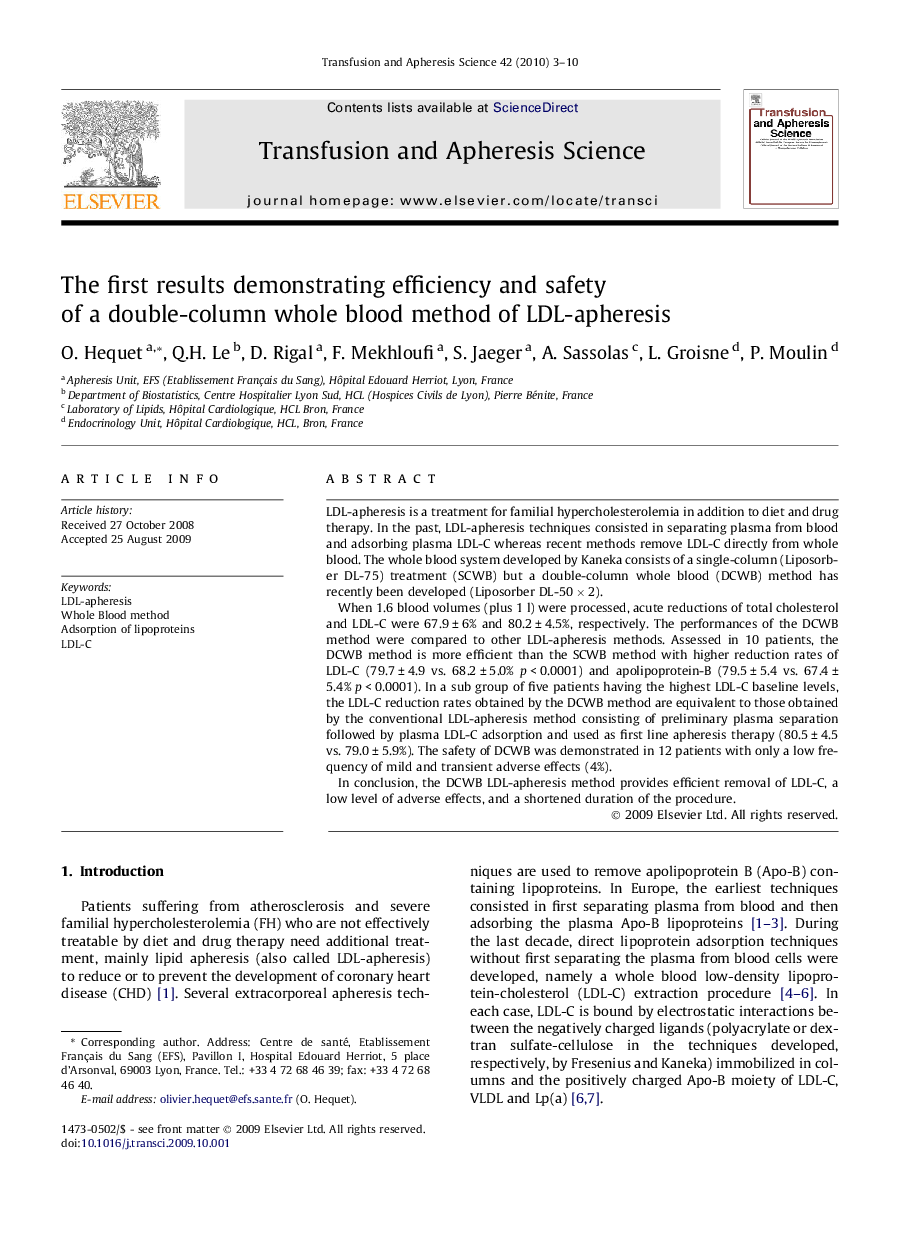| Article ID | Journal | Published Year | Pages | File Type |
|---|---|---|---|---|
| 3335899 | Transfusion and Apheresis Science | 2010 | 8 Pages |
LDL-apheresis is a treatment for familial hypercholesterolemia in addition to diet and drug therapy. In the past, LDL-apheresis techniques consisted in separating plasma from blood and adsorbing plasma LDL-C whereas recent methods remove LDL-C directly from whole blood. The whole blood system developed by Kaneka consists of a single-column (Liposorber DL-75) treatment (SCWB) but a double-column whole blood (DCWB) method has recently been developed (Liposorber DL-50 × 2).When 1.6 blood volumes (plus 1 l) were processed, acute reductions of total cholesterol and LDL-C were 67.9 ± 6% and 80.2 ± 4.5%, respectively. The performances of the DCWB method were compared to other LDL-apheresis methods. Assessed in 10 patients, the DCWB method is more efficient than the SCWB method with higher reduction rates of LDL-C (79.7 ± 4.9 vs. 68.2 ± 5.0% p < 0.0001) and apolipoprotein-B (79.5 ± 5.4 vs. 67.4 ± 5.4% p < 0.0001). In a sub group of five patients having the highest LDL-C baseline levels, the LDL-C reduction rates obtained by the DCWB method are equivalent to those obtained by the conventional LDL-apheresis method consisting of preliminary plasma separation followed by plasma LDL-C adsorption and used as first line apheresis therapy (80.5 ± 4.5 vs. 79.0 ± 5.9%). The safety of DCWB was demonstrated in 12 patients with only a low frequency of mild and transient adverse effects (4%).In conclusion, the DCWB LDL-apheresis method provides efficient removal of LDL-C, a low level of adverse effects, and a shortened duration of the procedure.
